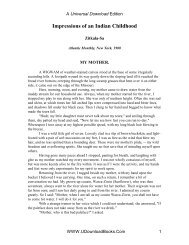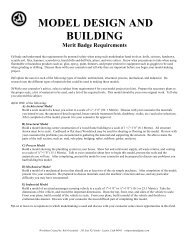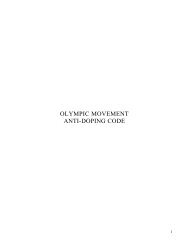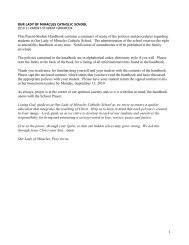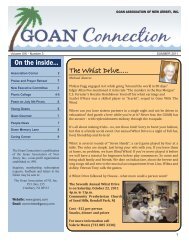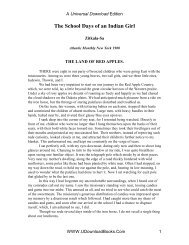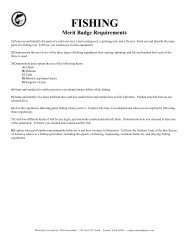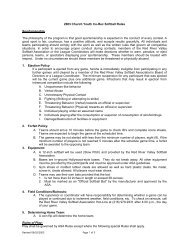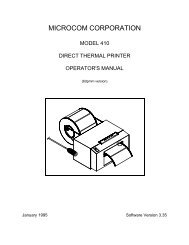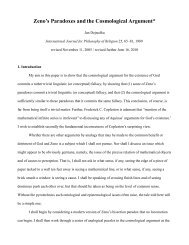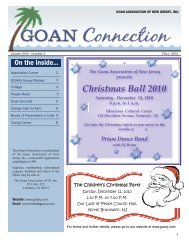Dummett's Backward Road to Frege and to Intuitionism - Tripod
Dummett's Backward Road to Frege and to Intuitionism - Tripod
Dummett's Backward Road to Frege and to Intuitionism - Tripod
Create successful ePaper yourself
Turn your PDF publications into a flip-book with our unique Google optimized e-Paper software.
(I waive the possibility of presentations of cus<strong>to</strong>mary references via their relationships <strong>to</strong> names,<br />
senses, forces, <strong>to</strong>nes, <strong>and</strong> ideas), where is the one-one correlation between all possible cus<strong>to</strong>mary<br />
references <strong>and</strong> all possible cus<strong>to</strong>mary senses? Each possible world consists only of objects <strong>and</strong><br />
functions. Each possible object can be presented in indefinitely many ways, <strong>and</strong> each possible function<br />
is just a mere mapping function that can be presented in indefinitely many ways. The possible senses<br />
expressed by possible function-names include all possible colors <strong>and</strong> shapes, all possible sensible<br />
qualities, all possible ways <strong>to</strong> grasp a mapping function. This is not <strong>to</strong> mention that “1 + 1” <strong>and</strong> “4 - 2”<br />
express different senses of the same necessary object.<br />
Even assigning all the truth-values of all possible sentences of L would leave us clueless, since<br />
truth-values are extensional in sense (2), just as truth-conditions are, <strong>and</strong> there is no backward road. For<br />
example, add all the truth-values of all the a<strong>to</strong>mic sentences <strong>to</strong> my example. Namely, “Fa,” “Fb,” <strong>and</strong><br />
“Fc” refer <strong>to</strong> the True <strong>and</strong> “Fd” refers <strong>to</strong> the False. How could that help? We simply cannot squeeze<br />
any intensions in sense (2) out of extensions in sense (2), even if we include all truth-value assignments<br />
as well as all truth-conditions among the extensions. There is always sensial underdetermination. This<br />
intimates the consequences for intuitionism.<br />
We must distinguish the truth-condition of a statement from a statement of the truth-condition.<br />
The former is extensional in sense (2). The latter is intensional in sense (2), even if it describes a<br />
definitional enumeration of a mere set by its members. And it expresses a thought whose component<br />
intensional in sense (2) senses refer <strong>to</strong> the extensional in sense (2) references which structuredly<br />
compose the extensional in sense (2) truth-condition (compare Dummett 1981a: 80). This might be<br />
called a logically indirect relationship in virtue of the mediating roles of the component senses <strong>and</strong><br />
component references. <strong>Frege</strong>’s semantic schema is not truth-describes-fact, but function-maps-value-<br />
on<strong>to</strong>-argument(s). 11 An extensional in sense (2) truth-condition is just that a certain concept does map<br />
its argument(s) on<strong>to</strong> the True as asserted. But even the previous sentence expresses an intensional<br />
21




